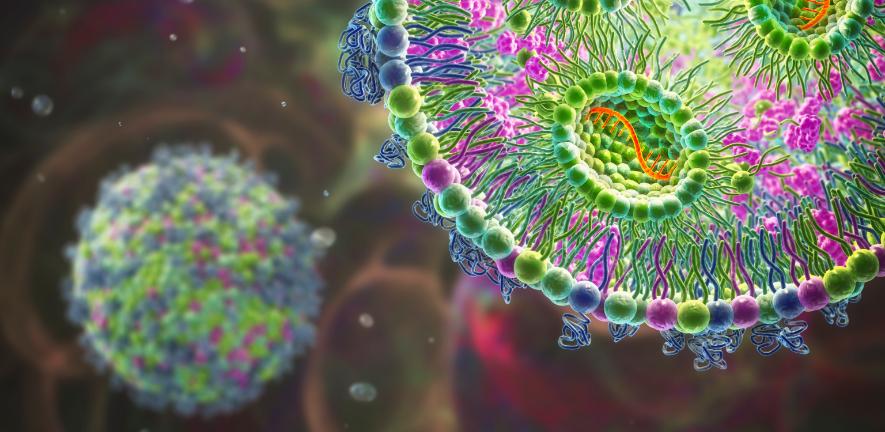
The CEU has a major focus on studying domains of molecular traits of relevance to CVD and other common, complex diseases, including transcriptomics, proteomics, metabolomics/lipidomics and haematological traits. By conducting large-scale genetic discovery analyses, we can understand the genetic regulators of molecular trait levels, providing a platform for causal inference through Mendelian randomisation, imputing molecular trait levels, and deriving prediction models.
The CEU focuses on traits in types of biological domains for which some causal CVD risk factors have already been established. Our current priority areas are:
- Gene expression: In partnership with the Wellcome Sanger Institute and AstraZeneca’s Centre for Genomics Research, we have conducted RNA sequencing in whole blood from ~5000 participants from the INTERVAL Bioresource and combined them with genetic data to understand the genetic basis for gene expression and splicing (Tokolyi et al, medRxiv, 2023).
- Proteins: We have measured thousands of plasma proteins in subsets of participants from INTERVAL and the BELIEVE study using platforms such as the Olink Target and HT Explore assays, the SomaLogic SomaScan assay and other multiplex protein assays. For example, in 2018, we published a GWAS of ~3500 proteins in ~3200 participants from INTERVAL, identifying nearly 2000 associations (Sun et al, Nature, 2018). Further details, including access to GWAS summary statistics and individual-level data from our publications, can be found on our proteins page.
- Lipids and metabolites: We have used multiple high-dimensional ‘omics assays that in aggregate capture information on ~3000 distinct lipids, lipoprotein classes and metabolites in up to 300,000 participants. For example, we have used Metabolon’s Discovery HD4 untargeted mass spectrometry platform to quantify ~1000 plasma metabolites in ~17,000 participants from INTERVAL (Surendran et al, Nature Medicine, 2022). We have also aggregated data from multiple studies around the world, such as our international GWAS meta-analysis of the Nightingale Health NMR platform in ~136,000 participants (Karjalainen et al, Nature, 2024). Further details, including access to GWAS summary statistics and individual-level data from our publications, can be found on our lipids, lipoproteins and metabolites page.
- Haematological traits: The CEU has provided co-leadership for the discovery of many novel genetic variants associated with volumes, counts and other phenotypes of circulating red cells, white cells and platelets (Astle et al, Cell, 2016), as well as novel functional cell parameters and iron biomarkers (Akbari et al, Nature Communications, 2023). Further details, including access to GWAS summary statistics from our publications, can be found on our haematological traits page.
The CEU also has a strong track record in leading major international consortia to identify genetic variants associated with cardiovascular diseases and risk factors, including coronary artery disease (Aragam et al, Nature Genetics, 2022), blood pressure (Surendran et al, Nature Genetics, 2020) and lipids (Liu et al, Nature Genetics, 2017).
